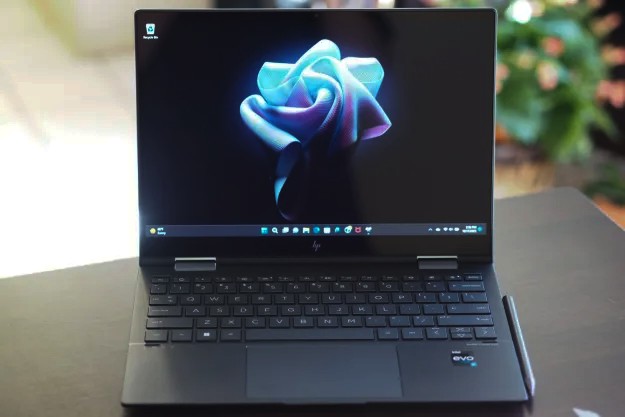Variety might be the spice of life, but it’s also the key to success in the tech game, where margins are minute and the more products you have, the wider your audience is. That’s the ideal that HP is aiming for with its Envy line up at least, with the announcement of a new Envy x360, and additional 15.6 and 17.3 inch Envy models fleshing out the range.
Set to refresh and replace older elements of the line up, these new Envy laptops come in thinner and lighter than their predecessors and have better connectivity options too – as you might expect. The biggest upgrade, though, is in the internal hardware.
HP Envy x360 2-in-1 notebook
Looking to the Envy x360 first, potential buyers have options of 6th generation Intel Core i5 or i7 CPUs, as well as an AMD FX 9800P APU. Depending on that choice, the options for graphics range from Intel’s HD 530, Intel Iris, or AMD’s Radeon R7 on-board GPU, if you select the AMD processor.
Like the other new Envy entries, the x360 supports up to 16GB of memory, though the option of up to a 2TB hard drive (HDD) is more than any others. It also has an option for an additional 256GB PCIE solid state drive (SSD) if you fancy a snappier system.
Unlike its brothers and sisters, the x360’s display is a touchscreen by default; the other Envy laptops have it as an optional extra. It can also come in 1080p or 4K IPS panel, depending on your preference.
The x360 has lost some weight, too. The 15-incher is 21 percent lighter than before, coming in at .75 inches thin and 4.5 pounds.
The big feature setting the x360 apart is of course the hinge. This allows it to fold through a near 360 degrees, thereby giving you a tablet when you need it, or a tented stand display, or any other configuration throughout that full circle.
HP Envy notebooks
In comparison, the standard 15.6 inch and 17.3 inch models have a more traditional hinge, though it has been raised to provide a more stable platform at different angles, and provides better airflow underneath the chassis.
Internally they’re quite similar to the x360, coming with the same Intel CPU options (though no AMD APU can be bundled in) and a standard 16GB of memory, rather than making it an optional “up to.” Storage wise, there are more choices to make, with options for a terabyte HDD or a 512GB SATA SSD, or a dual drive alternative, with a 256GB PCIE SSD, and a terabyte hard drive backing it up.
The smaller of the two has options for Intel HD 530 or Iris graphics, while the larger variant can switch it all out for an Nvidia 940MX, if you so choose. Regardless, both have options for 1080p or 4K displays, much like the X360, and all three have the same three USB 3.0 ports, one USB Type-C port, and an HDMI Connector.
There is of course a noticeable size and weight difference between them. The 15.6 inch Envy clocks in at just shy of 0.7 inches and 4.4 pounds, while the 17.3 inch version ups the ante to one inch thick and 6.6 pounds. You might notice that the 15-inch “standard” Envy is lighter and thinner than the x360, 2-in-1 model. That’s no mistake. HP says the reduction in size and weight is possible because the standard Envy ditches the touchscreen and more complex hinge.
All versions, we’re told, also come equipped with a LED backlit keyboard, audio handled by Bang and Olufsen and a bigger touchpad than we’ve seen in previous generations of Envy hardware.
Availability is expected to begin around late May, with the larger Envy and x360 launching on the 1st June. Pricing for the trio begins at $680 with the stock Envy x360, through $780 for the 15.6 inch version and all the way up to $1,030 for the 17.3 inch iteration.
Though of course optional extras, more memory and larger storage drives will cost that bit more.
Editors' Recommendations
- HP launches a new gaming laptop and HyperX accessories
- Does Dell or HP make the best 16-inch laptop? You might be surprised
- This midrange HP laptop beats the Dell XPS 15 in one important way
- This is the only laptop to send your kid to college with
- HP’s new Envy x360 14 looks like a killer value for what you get



